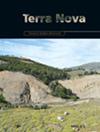由约1.54 Ga金伯利岩揭示的跨华北造山带下类似克拉通的次大陆岩石圈地幔
IF 1.7
3区 地球科学
Q2 GEOSCIENCES, MULTIDISCIPLINARY
引用次数: 0
摘要
哥伦比亚等超大陆内部的古造山带可以与克拉通一样保持稳定演化。这些造山带下的岩石圈地幔是什么样的,它是如何演化成稳定状态的,这仍然是个谜。跨华北造山带(TNCO)是哥伦比亚超大陆内典型的碰撞造山带之一,形成于约1.85 Ga。我们的研究表明,在约1.54 Ga,一群金伯利岩侵入了造山带。这些岩石最初形成于厚岩石圈(200千米)之下。它们的夹带橄榄石岩心显示出来自难熔地幔橄榄岩的重叠橄榄石组成。结果表明,在约1.54 Ga时,TNCO下方存在厚而难熔的岩石圈地幔。这种克拉通的性质可能是由于岩石圈地幔中大量的熔体萃取,可能是由大约1.78 Ga的大火成岩事件引起的,这最终导致了TNCO在随后的超大陆旋回期间的长期稳定性。本文章由计算机程序翻译,如有差异,请以英文原文为准。
A craton‐like subcontinental lithospheric mantle beneath the Trans‐North China Orogen revealed by the ca. 1.54 Ga kimberlites
Abstract Ancient orogens within the supercontinent like Columbia can remain stable evolution as long as the cratons. What kind of lithospheric mantle was beneath those orogens and how it evolved into a stable state are still enigmatic. The Trans‐North China orogen (TNCO) is one of the typical collisional orogens within the Columbia supercontinent and was formed at ca. 1.85 Ga. Our work reveals that a cluster of kimberlites intruded the orogenic belt at ca. 1.54 Ga. These rocks were originally generated under a thick lithosphere (>200 km). Their entrained olivine cores show a composition of overlapping olivines from refractory mantle peridotites. The results suggest a thick and refractory lithospheric mantle beneath the TNCO at ca. 1.54 Ga. Such craton‐like property may result from large volume melt extraction from the lithospheric mantle, possibly caused by the ca. 1.78 Ga large igneous event, which eventually induces the long‐term stability of the TNCO during the subsequent supercontinent cycle.
求助全文
通过发布文献求助,成功后即可免费获取论文全文。
去求助
来源期刊

Terra Nova
地学-地球科学综合
CiteScore
4.80
自引率
8.30%
发文量
59
审稿时长
2.3 months
期刊介绍:
Terra Nova publishes short, innovative and provocative papers of interest to a wide readership and covering the broadest spectrum of the Solid Earth and Planetary Sciences. Terra Nova encompasses geology, geophysics and geochemistry, and extends to the fluid envelopes (atmosphere, ocean, environment) whenever coupling with the Solid Earth is involved.
 求助内容:
求助内容: 应助结果提醒方式:
应助结果提醒方式:


